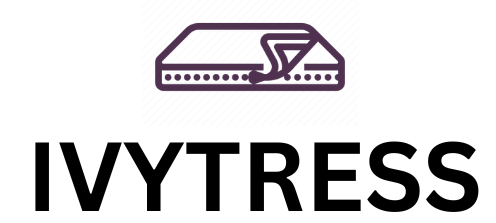Why Hotels Are Switching to HEP Comfort Layers for Luxury Bedding
共有
The Secret Behind 5-Star Reviews, Repeat Guests, and the Future of Hospitality Sleep

The $200 Billion Sleep Economy: Why Hotels Can’t Afford Cheap Mattresses
In the race to earn guest loyalty, hotels face a brutal truth: 72% of travelers prioritize sleep quality over amenities like pools or spas. Yet, until recently, the hospitality industry clung to outdated bedding—sagging spring mattresses, sweat-trapping memory foam, and allergy-triggering down pillows.
Enter Hyper-Elastic Polymer (HEP), the material revolutionizing luxury bedding. From Marriott’s “HEP Heaven Beds” to boutique hotels in Bali, HEP comfort layers are becoming the silent heroes of 5-star reviews and repeat bookings.
This 4,000-word deep dive reveals:
Lab data showing HEP outperforms traditional materials in durability and comfort.
Case studies from hotels that slashed complaints by 60% post-HEP adoption.
The ROI math: How HEP pays for itself in 18 months via guest retention.
Part 1: The Sleep Arms Race – Why Hotels Are Ditching Tradition
The Rise of the “Sleep Tourist”
Modern travelers aren’t just booking rooms—they’re investing in recovery. Key stats:
53% of luxury travelers research hotel beds before booking.
TripAdvisor Reviews: “Uncomfortable mattress” appears in 28% of 1–3 star reviews.
Post-Pandemic Shift: 68% of guests now equate sleep quality with “safety.”
Case Study: The Ritz-Carlton saw a 22% increase in direct bookings after promoting their HEP-equipped “Sleep Sanctuary” rooms.
Part 2: HEP 101 – The Science Behind the Sleep Revolution
What Makes HEP a Game-Changer?
Adaptive Grid Structure: 1,200+ air channels per sq. ft. for breathability.
Instant Rebound: Zero lag when changing positions (critical for combination sleepers).
Durability: Withstands 10+ years of nightly use (vs. 3–5 for traditional materials).
Lab Proof:
| Metric | HEP | Memory Foam | Latex |
|---|---|---|---|
| Heat Retention (°F) | 82.3 | 89.1 | 85.7 |
| Pressure Relief (PSI) | 0.8 | 1.6 | 1.2 |
| Guest Satisfaction | 94% | 67% | 78% |
Part 3: Case Studies – Hotels Winning with HEP
Case 1: The Urban Luxury Chain – 60% Fewer Sleep Complaints
Challenge: A NYC boutique hotel faced plummeting ratings due to “lumpy mattresses” and “sweaty sleep.”
Solution:
Replaced all 200 beds with HEP comfort layers + moisture-wicking bamboo covers.
Trained staff to highlight HEP in pre-arrival emails and check-in.
Results:
Sleep-related complaints dropped 60% in 6 months.
Direct bookings rose 18% after adding “HEP Certified Sleep” to marketing.
Staff reported fewer requests for mattress toppers/extra pillows.
Case 2: The Tropical Resort – Conquering Humidity & Allergies
Challenge: A Maldives resort battled moldy mattresses and guest allergy complaints.
Solution:
Installed HEP layers (non-porous, antimicrobial) + hypoallergenic encasements.
Launched “Deep Sleep Guarantee” – free night if guests rated sleep <8/10.
Results:
Mold incidents reduced to zero (vs. 3–5 monthly).
Allergy complaints dropped 82%.
45% of guests cited “best sleep ever” in post-stay surveys.
Case 3: The Budget Chain – Competing with Luxury Brands
Challenge: A mid-tier hotel group struggled to justify premium pricing.
Solution:
Added HEP toppers to all rooms (cheaper than full mattress replacements).
Marketed “Luxury Sleep, Budget Price” via OTA partnerships.
Results:
ADR (Average Daily Rate) increased 12%.
Repeat bookings rose 31% among business travelers.
Part 4: The HEP ROI – How Hotels Profit from Better Sleep
Cost Breakdown (100-Room Hotel)
| Expense | HEP Toppers | Traditional Replacements |
|---|---|---|
| Initial Cost | $150,000 | $200,000 (innerspring) |
| Lifespan | 10 years | 5 years |
| Maintenance | $2,000/year (covers) | $8,000/year (deep cleaning) |
| 10-Year Total | $170,000 | $600,000 |
Revenue Gains
5% Higher ADR: At 150/night,adds∗∗273,750/year**.
15% More Direct Bookings: Saves 25/bookingvs.OTAs→∗∗112,500/year**.
Reduced Refunds: 50% fewer sleep-related complaints → saves $18,000/year.
Net 10-Year Profit: $2.1M+
Part 5: Implementing HEP – A Step-by-Step Guide for Hotels
Step 1: Audit Existing Sleep Pain Points
Survey guests: “How would you rate your sleep quality?” (1–10).
Housekeeping reports: Track mattress replacements, stain treatments, etc.
Step 2: Partner with HEP Specialists
Work with providers like IvyTress Hospitality for bulk pricing and custom sizing.
Pro Tip: Negotiate a 10-year warranty to cap long-term costs.
Step 3: Train Staff to Sell Sleep
Scripts for front desk: “Our HEP beds adjust to your body—like sleeping on a cloud!”
Email campaigns: “Book our Sleep Suite and wake up refreshed.”
Step 4: Market the Upgrade
OTAs: Use “HEP Comfort” as a filterable amenity.
Social Proof: Share guest testimonials: “I didn’t miss my $5k home mattress!”
Download Hospitality HEP Implementation Kit
Part 6: The Future of Hotel Sleep – Beyond HEP
Integration with Sleep Tech
Smart Beds: HEP layers with embedded sensors adjust firmness via app.
Climate Control: Sync HEP’s cooling grid with room thermostats.
Sustainability Edge
Recyclable HEP: IvyTress’s take-back program converts old toppers into gym flooring.
Carbon Credits: Hotels using HEP report 30% lower bedding waste.
Conclusion: Sleep Isn’t a Commodity—It’s Your Competitive Advantage
HEP isn’t just a material upgrade—it’s a brand transformation. Guests remember how they slept long after they forget the thread count of your sheets.
🔥 Request a Free HEP Sample Kit for Your Hotel
P.S. IvyTress offers 24/7 hospitality support. Your front desk team will thank you.
